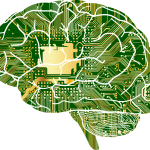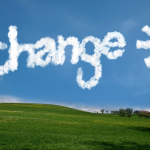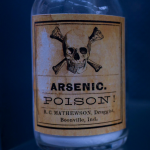Picture this: a digital watchdog, prowling through heaps of patient data, poised to raise the alarm at the slightest sign of trouble. Enter a guardian angel, in the guise of algorithms designed to forewarn medical staff of impending crises. But is it truly a beacon of salvation or a mirage in the desert of clinical uncertainty?
Harm Reduction
The film is a reminder of not only the scientific and technological miracle that was made possible by the Manhattan Project, which developed the atomic bombs that ended World War II, but also of what did not happen – namely, the massive ground invasion of the Japanese home islands that was being planned. Although it all transpired before I was born, I have several connections to it.
As developers and health systems embrace artificial intelligence-powered software, a pressing question emerges: Who bears the burden when these innovations inadvertently harm patients? And especially when legal precedent offers only faint guidance. Let's take a look.
Researchers examining the city's water system have produced some concerning data. Meanwhile, there's no reason anyone’s drinking water should be contaminated with lead. However, other than raising awareness of the problem, this study does little other than stir the water.
Reducing air pollution is a universally acknowledged goal, heralded for its potential to improve public health and environmental quality. However, amidst the enthusiasm for cleaner air, a critical question emerges: How effective have our efforts truly been?
The New York Times recently delved into a societal debate concerning the terminology used to describe unintentional deaths caused by drugs, particularly opioids. This discourse revolves around the distinction between labeling such deaths as overdoses versus poisonings, a seemingly subtle yet significant choice that carries implications for policy and perception.
Scientific progress is built on experiments, data, research, and constant questioning. While fraud is not a new issue, big data and Artificial Intelligence present challenges that dramatically increase the risk of fraud. New tools need to be developed to identify and reduce scientific fraud. Without them, the foundation of the scientific process is at risk.
As we bask in the anticipation of spring, a familiar cautionary whisper resurfaces – the age-old advice about the perils of too much sun exposure. Should we fear the sun? From its benefits and risks to the complexities of sunscreens and UV-protective clothing, an informed and balanced approach to sun exposure is our best bet.
Loud noises and ... trace minerals? Let's break down a new study examining an important contributor to age-related hearing loss. Spoiler alert: stocking up on zinc supplements is not the solution.
In the crowded market of wellness supplements, ARMRA Colostrum claims to offer a scientifically backed solution. However, a closer look reveals a familiar pattern of marketing tactics using buzzwords and bold claims. Despite touting transparency and scientific rigor, the evidence, as usual, falls short.
Arsenic has a well-deserved reputation as a poison; in ancient times it was known as the “Poison of Kings and the King of Poisons.” But arsenic, an element found naturally in soil, air, and drinking water, also has beneficial uses. How should we think about arsenic in terms of human health?
Since the beginning of the modern environmental movement in the 1970s, air pollution has been defined as the debasement of the outdoor ambient air. That movement has been a resounding success. Accompanying these benefits has been the recognition that the indoor environment is now relatively more important. The EPA has responded with citizen advisory programs but little information on indoor risk or remediations.











